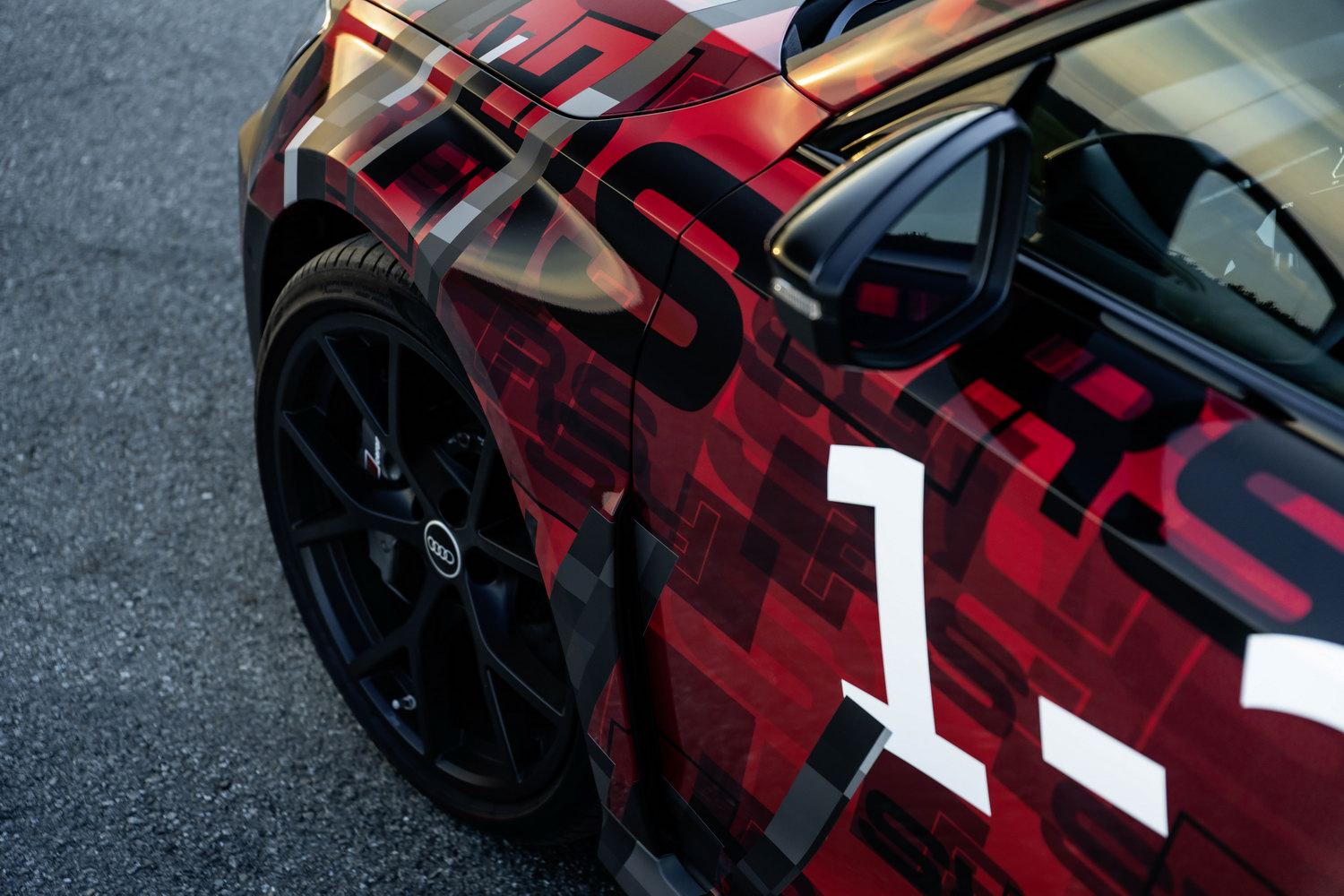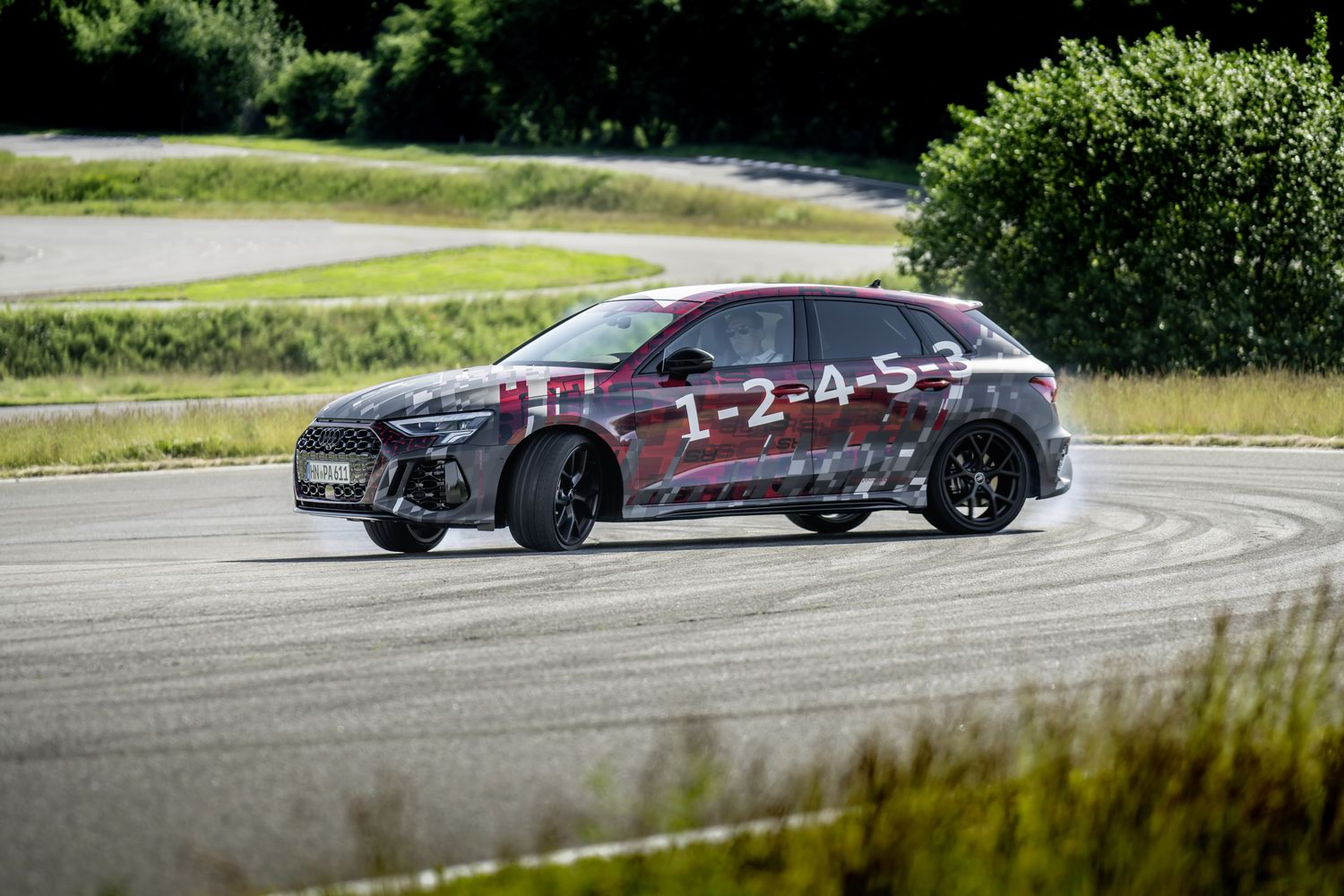It won't be too long before Audi strips the camouflage off the new RS 3 Sportback and Saloon, so, to keep us interested, it has released full technical details on the dynamic duo, from the turbocharged five-cylinder engine to the adaptive damping and, the newest aspect of all, a fancy new rear differential called RS Torque Splitter.
The Germans use literal language
No prizes for guessing what the RS Torque Splitter does... How it does that, however, is rather clever. The main purpose of this new differential is to help a car through a bend in a more agile manner, assisting with both safety and speed, while allowing the driver to use more of the power more of the time. The idea is to give more of the engine torque to the wheel on the outside of the bend and less to the wheel on the side, causing the car to pivot into a corner.
This is called torque vectoring and, though it was a feature of the old RS 3, the split across the rear axle in that car depended on 'wheel-selective torque control,' which was Audi's term for applying the brakes to individual wheels, causing more torque to be sent to the opposite side of the axle.
Instead, the RS Torque Splitter can actively alter the torque split across the rear axle, thanks to quick-acting electronic actuators that open or close clutch packs on each side. So, turn into a left-hand bend and the amount of torque sent to the left-hand rear wheel is reduced, while it is increased to the right-hand wheel, for example.
While this effect can be pronounced for 'dynamic' driving, the new differential can also aid safety by counteracting a slide, helping to bring the car back under control.
The operation of the RS Torque Splitter varies depending on conditions, driving style and the setting of the Audi drive select system.
All the driving modes
As ever, that drive select system allows the driver to choose which mode best suits their preference at any given moment. There are six core settings to choose from - comfort, auto, dynamic, efficiency, RS Performance and RS Torque Rear - along with the fully configurable RS Individual option.
In terms of the RS Torque Splitter, there are five different built-in 'characteristic curves', linked to the main driving modes. In comfort and efficiency, for example, more torque is sent to the front axle more of the time. For Dynamic mode, however, the rear axle is favoured. That appears to be taken to the extreme in the RS Torque Rear setting, which, according to Audi, "allows drivers to perform controlled drifts on closed roads" with up to 100 per cent of the engine's output sent to the rear wheel on the outside of the corner.
For those that prefer to set serious lap times on a circuit, Audi recommends the RS Performance mode, especially in conjunction with the optional Pirelli P Zero Trofeo R semi-slick tyres. This setting switches the stability control system into a Sport level, midway between activated and fully off.
Of course, Audi drive select system also alters the exhaust sound, adaptive dampers if fitted, power steering, transmission and engine response.
Don't forget the engine
Such tyre-shredding shenanigans as found in the RS Torque Rear mode would not be possible without a suitable powerplant. Audi has retained the charismatic turbocharged five-cylinder unit from the previous RS 3, a 2.5-litre engine making 400hp. That power, we are told, is now available over a wider range of revs, while peak torque has been increased 20Nm to 500Nm.
A seven-speed dual-clutch automatic gearbox is fitted as standard, featuring a launch control function. The result is 0-100km/h in just 3.8 seconds and a top speed of up to 290km/h (that may be subject to ticking several options boxes, though it's all but irrelevant in this part of the world in any case, save for bragging rights).
Optional RS sport suspension plus
As standard, the new Audi RS 3 will come with sports suspension with some pretty trick new dampers. The ride height is 10mm lower than that of the Audi S3 and a full 25mm lower than on a standard A3. Up front is a McPherson strut suspension setup with RS 3-specific pivot bearings, stiffened lower wishbones, subframes and anti-roll bar, while the camber front and rear has been reduced in the name of steering precision. Speaking of which, there's variable ratio power steering as standard ('progressive steering' in Audi-speak).
Although we've yet to see what will be fitted to the RS 3 for the Irish market, it's expected that the adaptive damping system will be optional. It comes with three baseline settings that are matched to different driving modes.
Audi RS 3 in Ireland
The finished product has yet to be unveiled, but the RS 3 looks to be a suitably aggressive take on the standard Audi A3 design. And, praise-be, there are real exhaust outlets for petrolheads to drool over. The Irish market specification has yet to be confirmed, as have prices. Nonetheless, given that the current Audi S3 costs around €56,000, don't expect much change from €80,000.









































